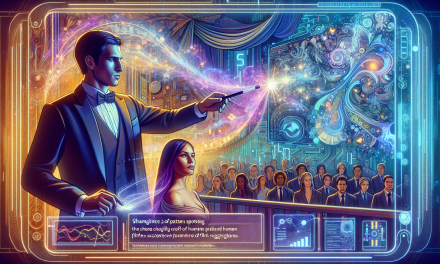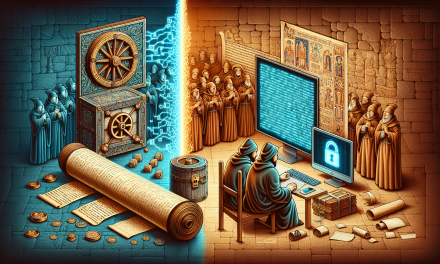Picture this: security researchers at a small antivirus company are staring at their computer screens in bewilderment. It’s 2010, and they’ve stumbled across something that shouldn’t exist—a digital ghost haunting industrial control systems across Iran. This computer worm is unlike anything they’ve ever seen. It doesn’t steal credit card numbers or display annoying pop-ups. Instead, it’s doing something far more unsettling: quietly sabotaging uranium enrichment equipment in the real world.
What they discovered would change cybersecurity forever. They called it Stuxnet, and it was the world’s first cyberweapon—a piece of malicious software designed not just to break computers, but to break the physical machines those computers controlled.
The Digital Detective Story
Imagine you’re a detective investigating a crime scene, but instead of fingerprints and DNA, you’re looking at lines of code. That’s exactly what researchers at VirusBlokAda, a small antivirus company in Belarus, found themselves doing when they first encountered Stuxnet.
The worm was incredibly sophisticated—like finding a Formula One race car in a parking lot full of bicycles. Most computer viruses are relatively simple: they spread quickly, cause obvious damage, and are often written by individual hackers looking for attention or quick profit. Stuxnet was different. It was patient, precise, and clearly the work of a well-funded team with serious resources.
Think of it like a master thief who spends years planning a heist, learning the guard schedules, mapping every corridor, and crafting specialized tools for one specific vault. Stuxnet had been designed with incredible precision to target one particular type of industrial equipment: Siemens programmable logic controllers (PLCs) used in Iran’s nuclear facilities.
How a Computer Virus Breaks Physical Things
Here’s where things get really interesting from a coder’s perspective. Most malicious software lives entirely in the digital world—it might steal your passwords or encrypt your files, but it can’t reach out and break your coffee maker. Stuxnet bridge that gap between the digital and physical worlds.
Industrial facilities like power plants, water treatment centers, and uranium enrichment facilities rely on specialized computers called programmable logic controllers. Think of these as the brain of the operation—they monitor sensors, control motors, and make thousands of tiny decisions every second to keep complex machinery running safely and efficiently.
Stuxnet was designed to infiltrate these systems by spreading through Windows computers via USB drives. Once it found its target—those specific Siemens controllers in Iranian nuclear facilities—it would do two devious things simultaneously. First, it would subtly alter the commands being sent to uranium enrichment centrifuges, causing them to spin at damaging speeds. Second, it would lie to the human operators, showing them fake sensor data that made everything appear normal.
It’s like having a malicious mechanic who secretly loosens your car’s wheel bolts while convincing you that your car is running perfectly. By the time you realize something’s wrong, significant damage has already occurred.
The Ethics of Digital Warfare
Stuxnet opened a Pandora’s box of ethical questions that we’re still grappling with today. When researchers finally reverse-engineered the worm’s code, they realized that this wasn’t the work of a single hacker in a basement—it was almost certainly a nation-state operation, widely believed to be a joint effort between the United States and Israel.
This raises profound questions about the nature of warfare and conflict in the 21st century. Is launching a cyberattack against another country’s infrastructure an act of war? What about when that attack is designed to prevent potentially dangerous nuclear weapons development? And what happens when these digital weapons inevitably escape their intended targets and spread to innocent computer systems?
Think about it like developing a highly contagious but “targeted” disease. Even if you design it to only affect a specific group, viruses—both biological and digital—have a way of mutating and spreading beyond their original parameters. Indeed, Stuxnet eventually escaped Iran’s nuclear facilities and was discovered on computers around the world.
Lessons for Aspiring Digital Citizens
Stuxnet teaches us several crucial lessons about living in our increasingly connected world. First, cybersecurity isn’t just about protecting your personal information anymore—it’s about protecting the physical infrastructure our society depends on. From power grids to water systems to transportation networks, nearly everything around us now depends on computer systems that could potentially be targeted by malicious actors.
Second, Stuxnet demonstrates the double-edged nature of technological sophistication. The same skills that allow us to create amazing beneficial technologies can also be used to create incredibly destructive weapons. This is why the tech community increasingly emphasizes the importance of ethical considerations in software development.
For young coders, this means thinking beyond just “can I build this?” to “should I build this?” and “what are the potential consequences if this technology were misused?” It’s like learning to drive—technical skill is important, but understanding traffic laws and driving responsibly is what keeps everyone safe on the road.
The Responsibility of Building Tomorrow’s Technology
Every programmer, from students writing their first “Hello, World” program to engineers at major tech companies, participates in shaping our digital future. Stuxnet reminds us that code isn’t just abstract logic—it has real-world consequences that can affect millions of people.
This doesn’t mean we should be paralyzed by the potential for misuse of technology. After all, the same computing power that enabled Stuxnet also enables medical devices that save lives, communication systems that connect families across continents, and educational tools that democratize learning opportunities.
Instead, it means approaching technology development with what we might call “responsible innovation”—building safeguards into our systems, considering potential misuse cases during the design process, and fostering a culture of ethical reflection within the tech community.
The story of Stuxnet isn’t just a tale of digital espionage or a chapter in the history of cybersecurity. It’s a mirror that reflects our own relationship with the powerful technologies we’re creating. As we stand on the threshold of even more transformative technologies—artificial intelligence, quantum computing, biotechnology—the questions Stuxnet raised become ever more pressing. How do we build a future where technology serves humanity’s best interests while preventing its worst impulses? Perhaps the answer lies not just in the code we write, but in the wisdom we bring to writing it.








